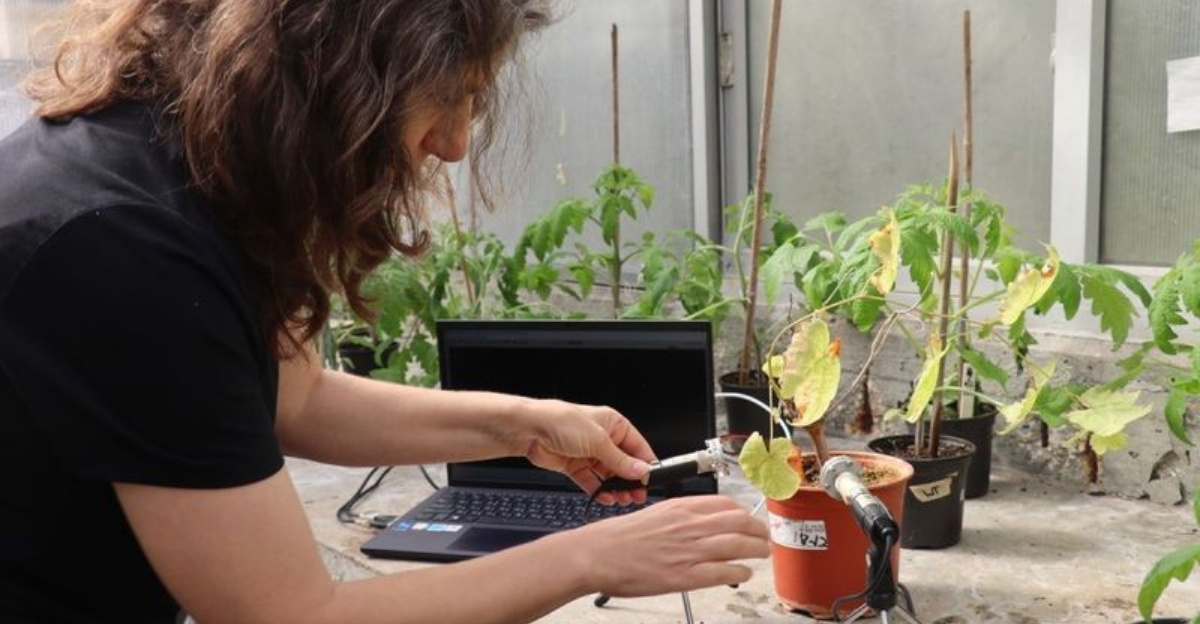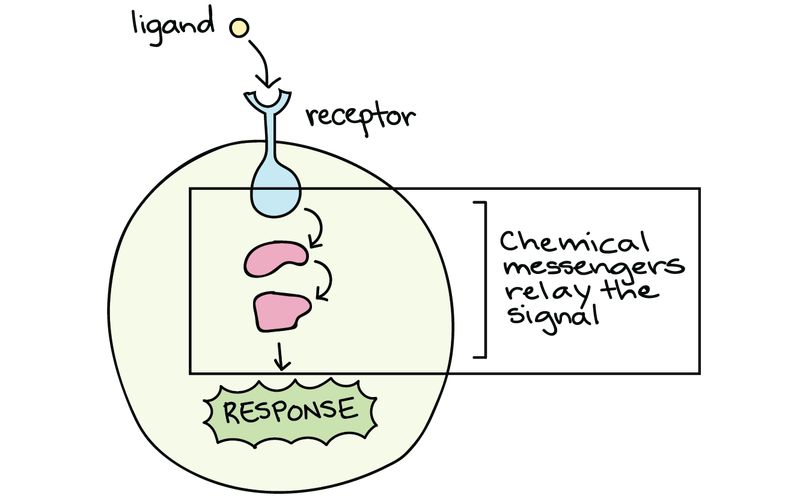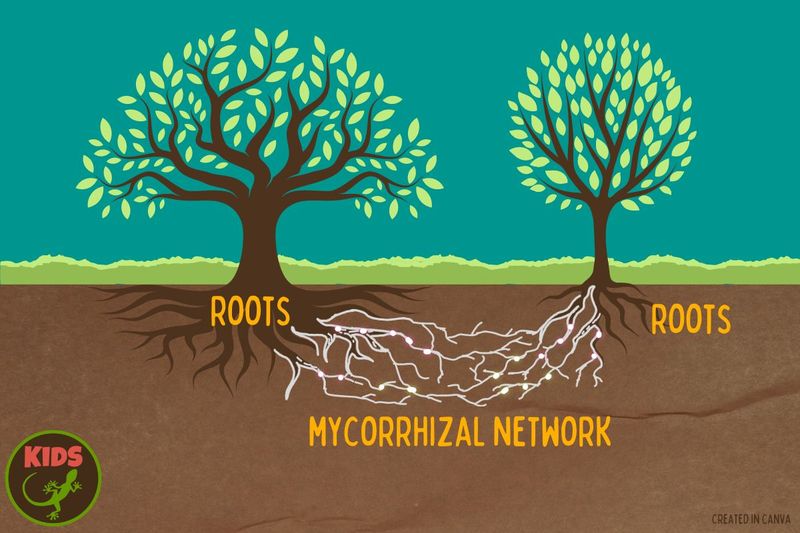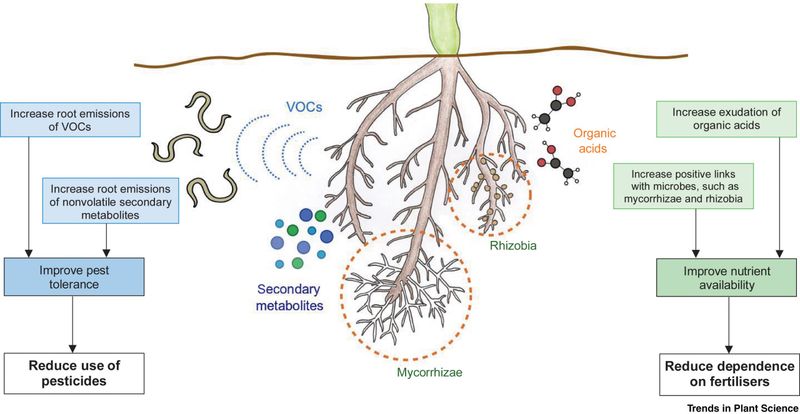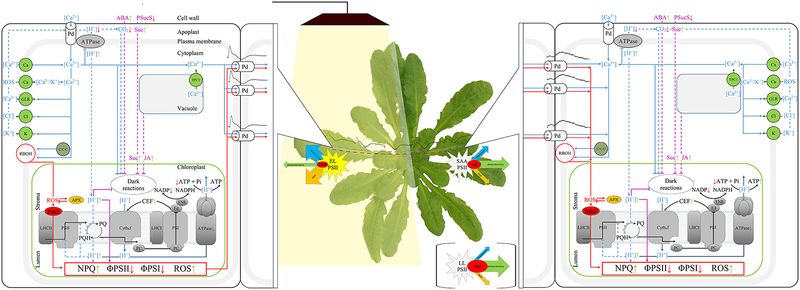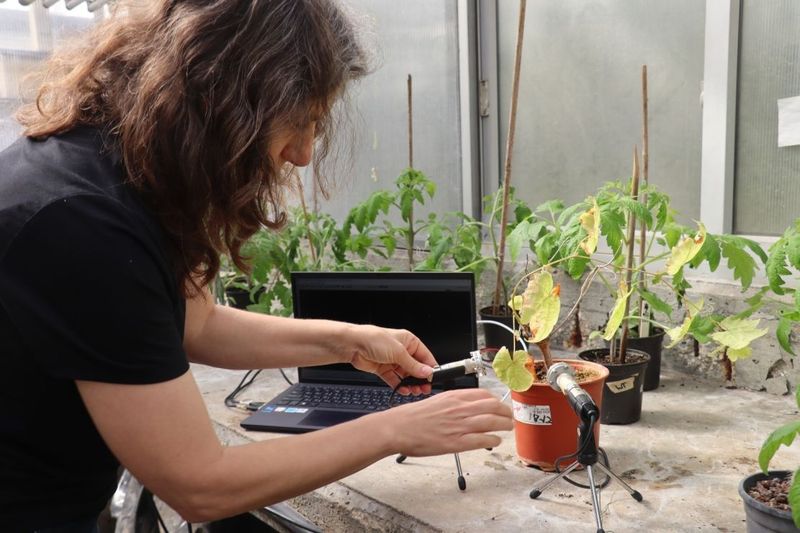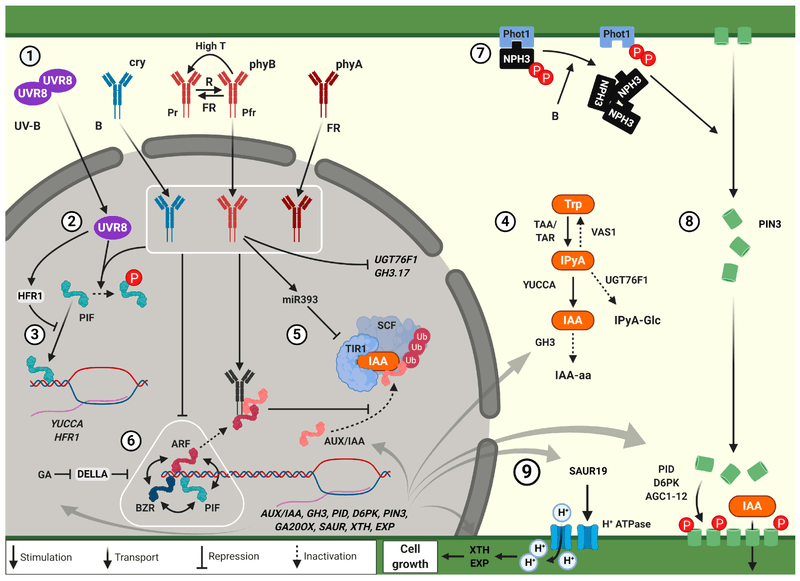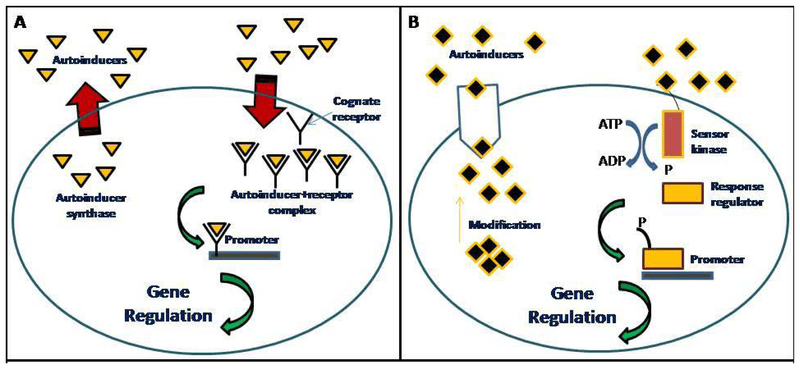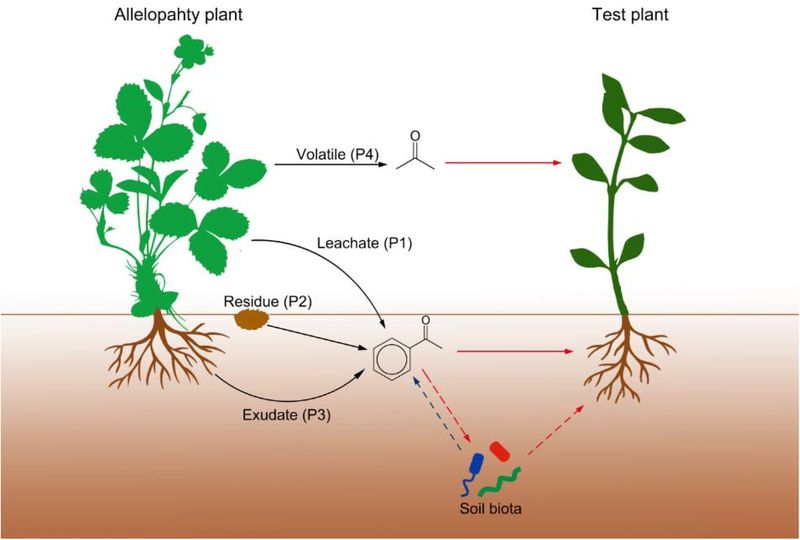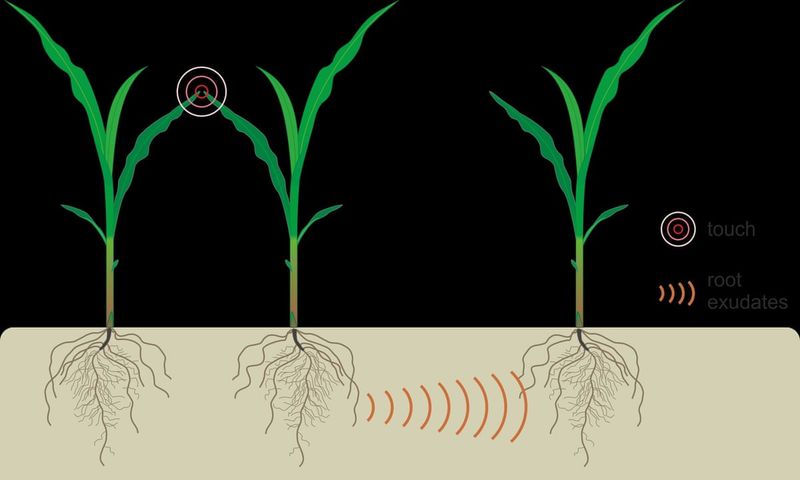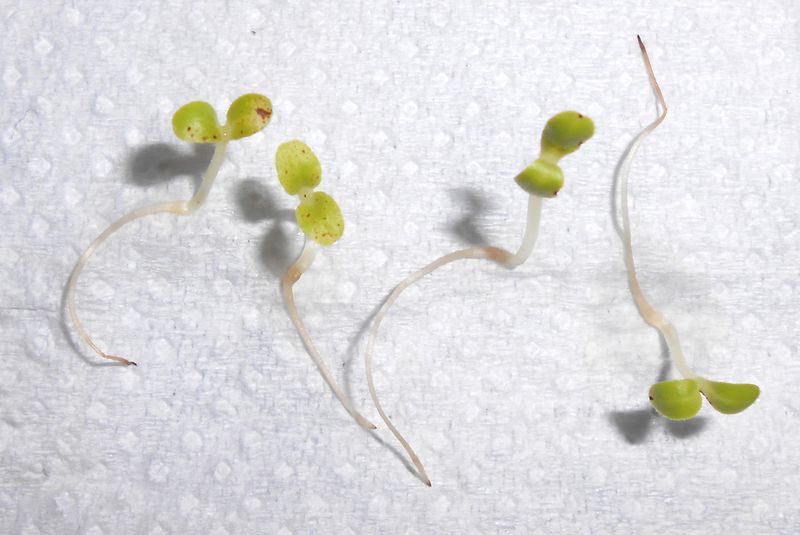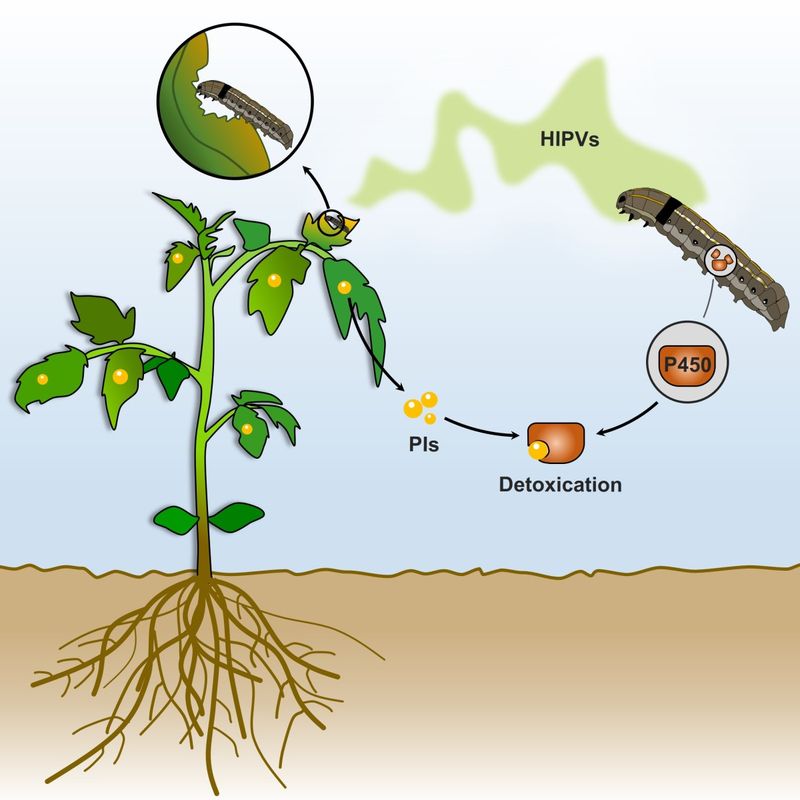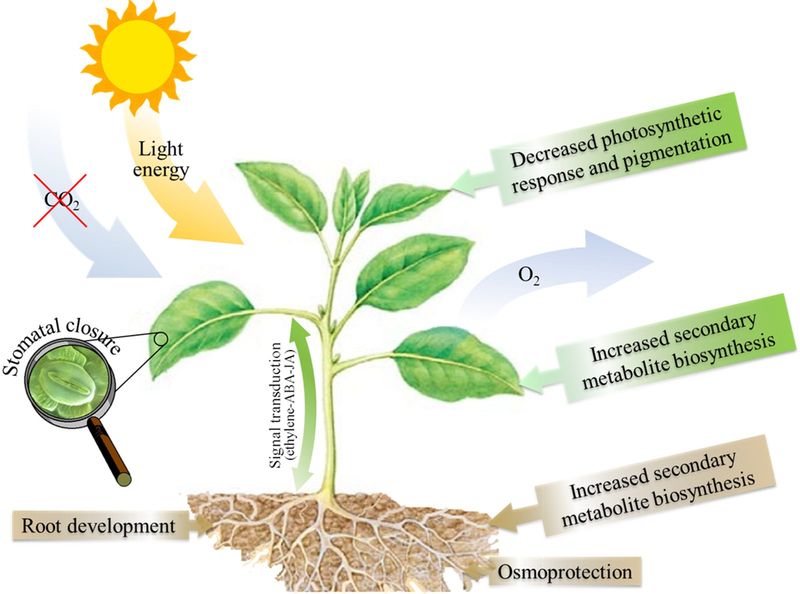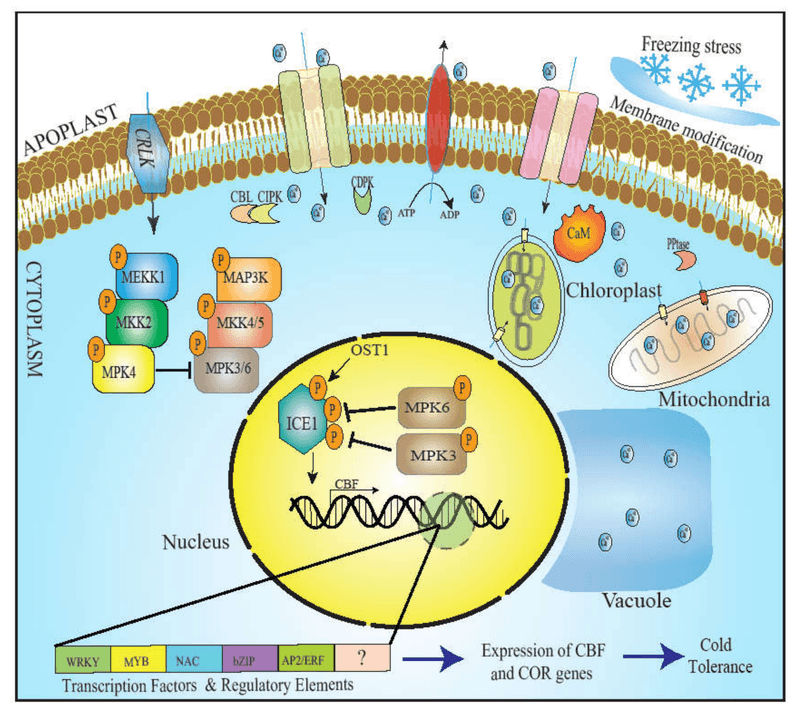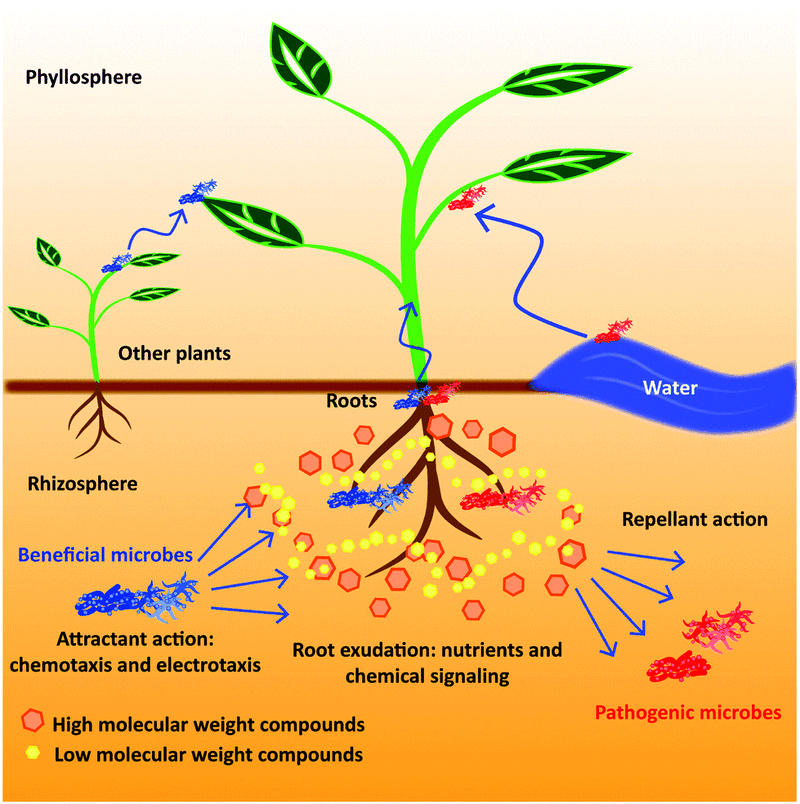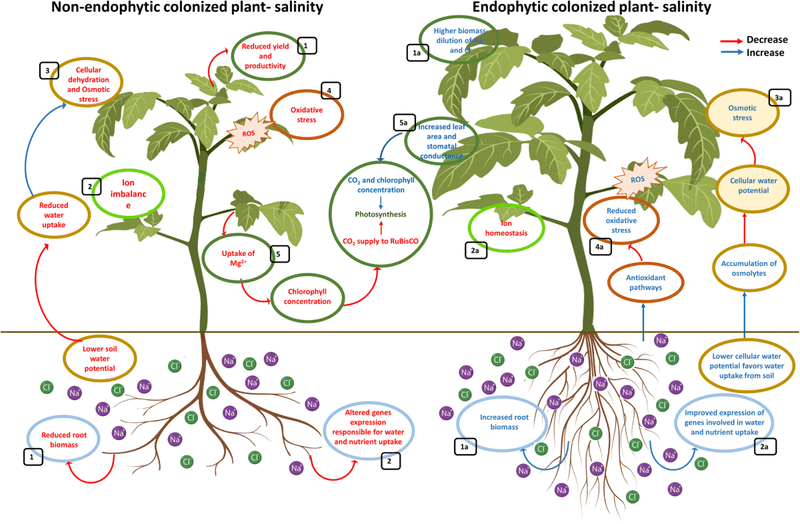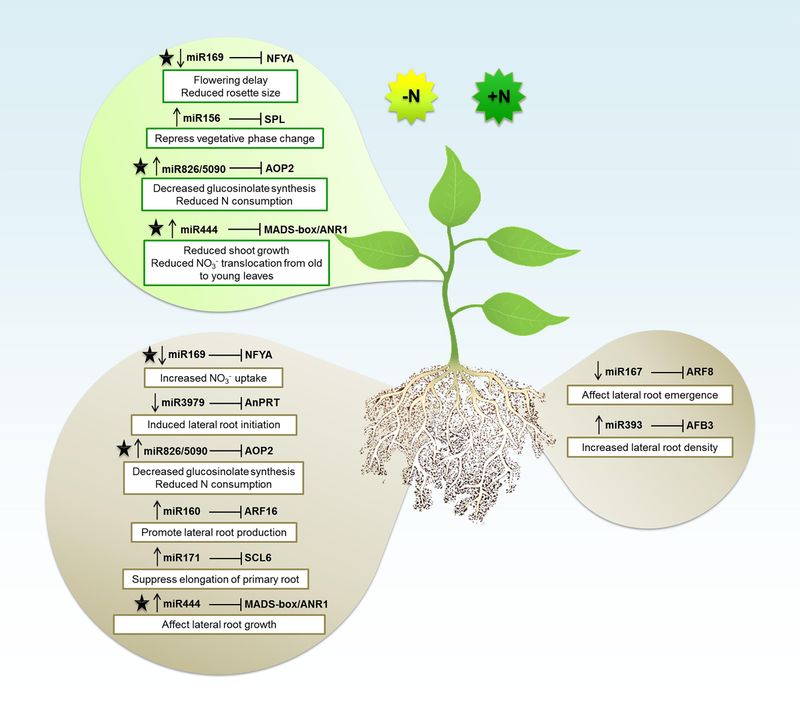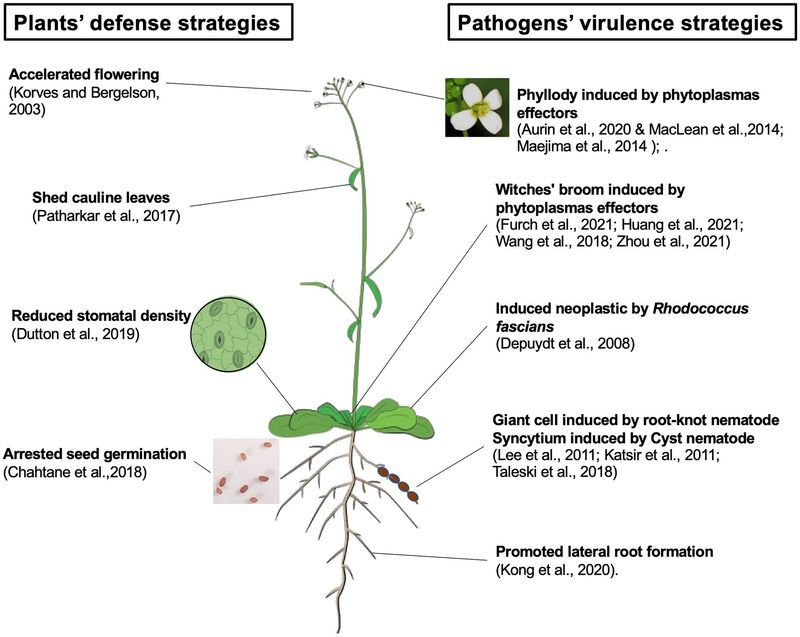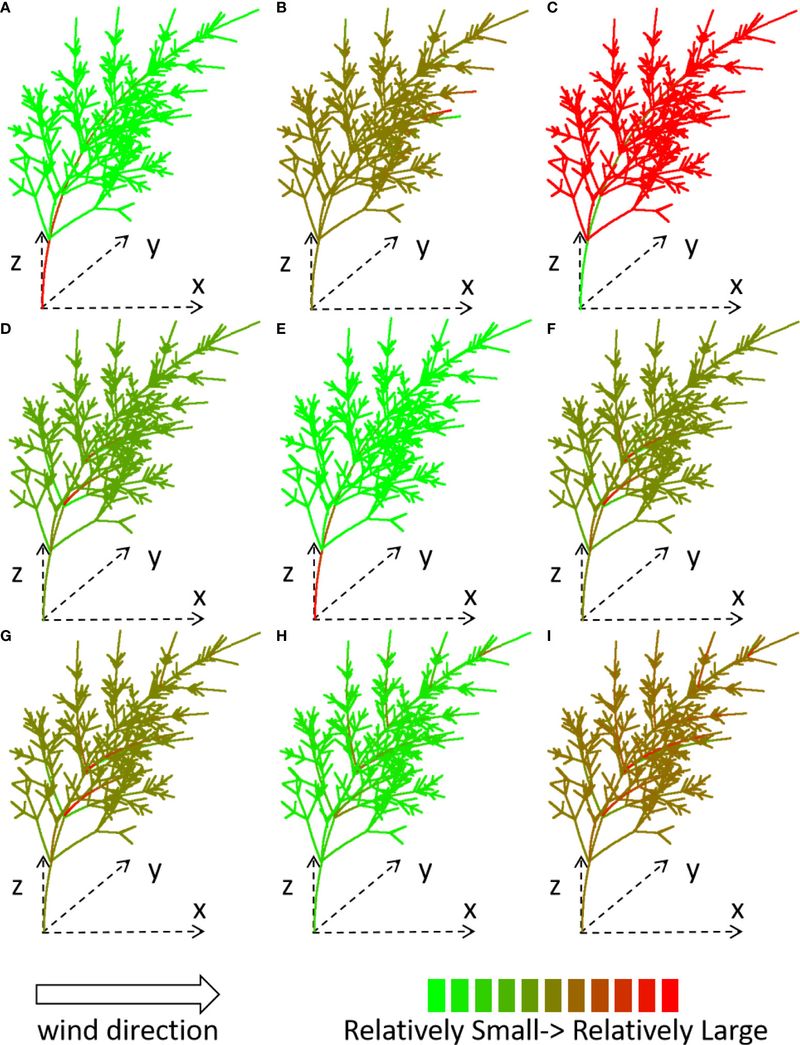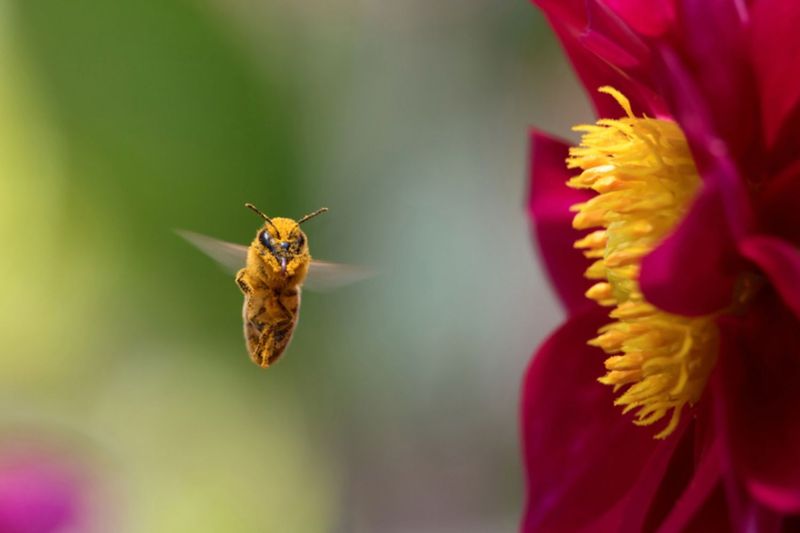Plants, though seemingly silent and immobile, have evolved fascinating ways to communicate with each other. From releasing chemical signals to utilizing underground networks, these green beings have developed a complex language of their own.
This post explores 20 peculiar methods plants use to interact and convey messages, showcasing the hidden life within our gardens and forests.
1. Chemical Signaling
Plants often release volatile organic compounds (VOCs) to communicate distress or to attract pollinators. When a plant is attacked by herbivores, it can release VOCs that signal neighboring plants to bolster their own defenses.
This airborne exchange acts like an early warning system, helping communities of plants to collectively fend off threats. Moreover, certain VOCs can attract insects that prey on the herbivores, providing a natural pest control method.
This chemical chatter underscores a sophisticated communication network that operates silently yet effectively in the plant kingdom.
2. Mycorrhizal Networks
Mycorrhizal networks, often called the “Wood Wide Web,” facilitate underground communication between plants. Fungi form symbiotic relationships with plant roots, extending into a vast network that connects multiple plants.
This allows for the transfer of nutrients and chemical signals, enabling plants to share resources and communicate threats like drought or disease. Through this network, older trees can support younger ones by transferring carbohydrates and other essential nutrients.
The mycorrhizal network exemplifies a cooperative system, enhancing survival and resilience in plant communities.
3. Root Exudates
Plants release chemicals known as root exudates into the soil, which can influence the growth and behavior of surrounding plants. These exudates include sugars, amino acids, and secondary metabolites that can attract beneficial microbes or deter harmful ones.
Additionally, they can alter the local soil chemistry, affecting nutrient availability for neighboring plants. Root exudates also play a role in allelopathy, where one plant suppresses the growth of another through chemical means, allowing for competitive advantages.
This underground communication reflects a strategic aspect of plant interactions.
4. Electrical Signaling
Plants utilize electrical signals to communicate internally and with neighboring plants. These signals can travel through tissues at surprising speeds, relaying information about environmental changes or stressors.
For example, when a leaf is damaged, an electrical signal can trigger defensive responses in other parts of the plant. This rapid communication system allows plants to respond quickly to threats, optimizing their chances for survival.
The use of electrical signaling highlights the advanced and dynamic nature of plant communication mechanisms.
5. Vibrational Communication
Plants can detect and respond to vibrations caused by insect activity. For instance, when caterpillars chew on leaves, the resulting vibrations can trigger the plant to produce chemical defenses.
This form of communication allows plants to preemptively bolster their defenses before further damage occurs.
Vibrational communication is a testament to the plants’ ability to sense and react to their environment in nuanced ways, illustrating a level of interaction that goes beyond mere chemical exchanges.
6. Photoreceptor Signaling
Plants use light not only for photosynthesis but also as a means of communication. Photoreceptors in plants can detect light quality and direction, triggering growth and development responses.
For example, shade-avoidance syndrome is a response where plants elongate their stems to outcompete neighbors for sunlight. This signaling mechanism allows plants to adapt to crowded environments and optimize their growth.
Photoreceptor signaling demonstrates how plants integrate environmental cues into their communication strategies, allowing them to thrive under varying conditions.
7. Quorum Sensing
Quorum sensing is a process where plants assess population density through chemical signaling. This mechanism allows them to coordinate actions, such as flowering or defense, based on the number of nearby plants.
By synchronizing these activities, plants can enhance pollination success and collective defense strategies.
Quorum sensing highlights the ability of plants to engage in cooperative behavior, optimizing their reproductive and survival strategies in response to environmental and social cues.
8. Allelopathy
Allelopathy is a form of chemical warfare where plants release toxins to inhibit the growth of competitors. This strategy allows certain plants to establish dominance in a habitat by suppressing neighboring species.
The chemicals involved can persist in the soil, creating long-term challenges for other plants attempting to grow in the vicinity.
Allelopathy showcases the competitive side of plant communication, where survival often hinges on the ability to outmaneuver and outcompete others in the ecosystem.
9. Leaf Movement Signaling
Some plants use leaf movements as a form of communication, responding to stimuli like touch or light changes. The sensitive plant, for example, folds its leaves when touched, potentially deterring herbivores by appearing less appetizing.
This movement can also be a signal to other parts of the plant, triggering defensive mechanisms.
Leaf movement signaling is a fascinating aspect of plant behavior, demonstrating how physical changes can serve as communication within and between plants.
10. Seed Germination Inhibitors
Some plants release chemicals that inhibit the germination of seeds from other species. This tactic ensures that the originating plant’s seeds have less competition when they germinate.
By controlling the germination environment, plants can enhance their offspring’s chances of survival.
Seed germination inhibitors are a strategic element of plant communication, reflecting how chemical signals can profoundly influence reproductive success and population dynamics in plant communities.
11. Herbivore-Induced Plant Volatiles (HIPVs)
When attacked by herbivores, plants can emit specific volatiles that attract predators of the herbivores. This indirect defense mechanism helps protect the plant by reducing herbivore pressure.
The release of HIPVs is a sophisticated form of plant communication, turning a threat into an opportunity by enlisting the help of natural allies. This dynamic interaction exemplifies the strategic use of chemical signals in plant defense and survival strategies.
12. Water Stress Signaling
Plants experiencing water stress can emit signals that alert neighboring plants. These signals often lead to increased drought resistance behaviors, such as closing stomata to reduce water loss.
By communicating water stress, plants can adjust their growth and conserve resources more efficiently. This communication enhances the resilience of plant communities in challenging environments, highlighting the importance of cooperative responses to abiotic stressors.
13. Cold Acclimation Signals
In anticipation of cold weather, plants can produce signals that trigger acclimation processes in themselves and neighboring plants. These signals help plants prepare for freezing temperatures by altering their cellular structures and metabolic activities.
Cold acclimation involves complex chemical exchanges that enhance survival during harsh winter months.
This communication ensures that plant communities can withstand seasonal changes, showcasing an adaptive strategy that supports long-term resilience.
14. Interspecies Chemical Signals
Plants can communicate across species boundaries using chemical signals. These interactions can facilitate mutual benefits, such as improved pest resistance or enhanced pollination.
Interspecies signaling enables plants to form alliances that enhance their survival and competitiveness. This type of communication highlights the interconnectedness of ecosystems, where diverse plant species collaborate to create balanced and resilient communities.
Such interactions underscore the complexity and sophistication of plant communication networks.
15. Salt Stress Signals
When exposed to high salinity, plants can send out chemical signals that help them and their neighbors tolerate salt stress. These signals induce physiological changes that improve salt tolerance, such as adjusting ion transport and osmotic balance.
By communicating salt stress, plants can collectively enhance their resilience to challenging soil conditions. This form of communication is vital in environments where salinity poses a significant challenge to plant growth and survival.
16. Heat Stress Signals
Plants experiencing heat stress release chemical signals that initiate protective responses in themselves and neighboring species.
These signals often lead to increased production of heat-shock proteins, which help maintain cellular integrity during high temperatures. By sharing information about heat stress, plants can better withstand extreme environmental conditions.
This communication underscores the dynamic nature of plant interactions, where timely responses to stressors are crucial for survival.
17. Nutrient Deficiency Signals
When facing nutrient deficiencies, plants can communicate with neighboring plants to adjust their growth and resource allocation.
These signals can trigger root growth or changes in nutrient uptake pathways, optimizing resource use in nutrient-poor conditions. By sharing information about nutrient availability, plants can collectively navigate challenging environments.
This communication highlights the cooperative nature of plant interactions, where sharing information enhances overall community resilience and productivity.
18. Pathogen Attack Signals
Plants attacked by pathogens can release signals that activate defense mechanisms in neighboring plants. These signals, often volatile compounds, prepare surrounding plants for potential infection, enhancing their resistance.
This early warning system helps contain disease spread and reduce damage. The ability to communicate pathogen threats demonstrates the sophisticated defense strategies employed by plants, where collective responses increase the likelihood of survival in pathogen-rich environments.
19. Wind-Induced Signals
Wind-induced mechanical signals can lead to changes in plant growth and development. These signals often result in stronger, more flexible structures to withstand wind stress.
Plants can also communicate through mechanical signals, adjusting their growth patterns in response to wind exposure.
This communication allows plants to adapt to dynamic environmental conditions, enhancing their stability and survival in windy habitats. Such interactions illustrate the versatile nature of plant signaling mechanisms.
20. Pollinator Attraction Signals
Plants use a variety of signals to attract pollinators, including visual cues like color and olfactory signals such as scent. These signals ensure successful pollination by guiding pollinators to flowers.
In some cases, plants can adjust their signals based on pollinator availability, optimizing their reproductive success. Pollinator attraction is a critical aspect of plant communication, highlighting the intricate relationships between plants and their pollinating partners.
This cooperation ensures the continuation of plant species, illustrating the interdependence within ecosystems.
